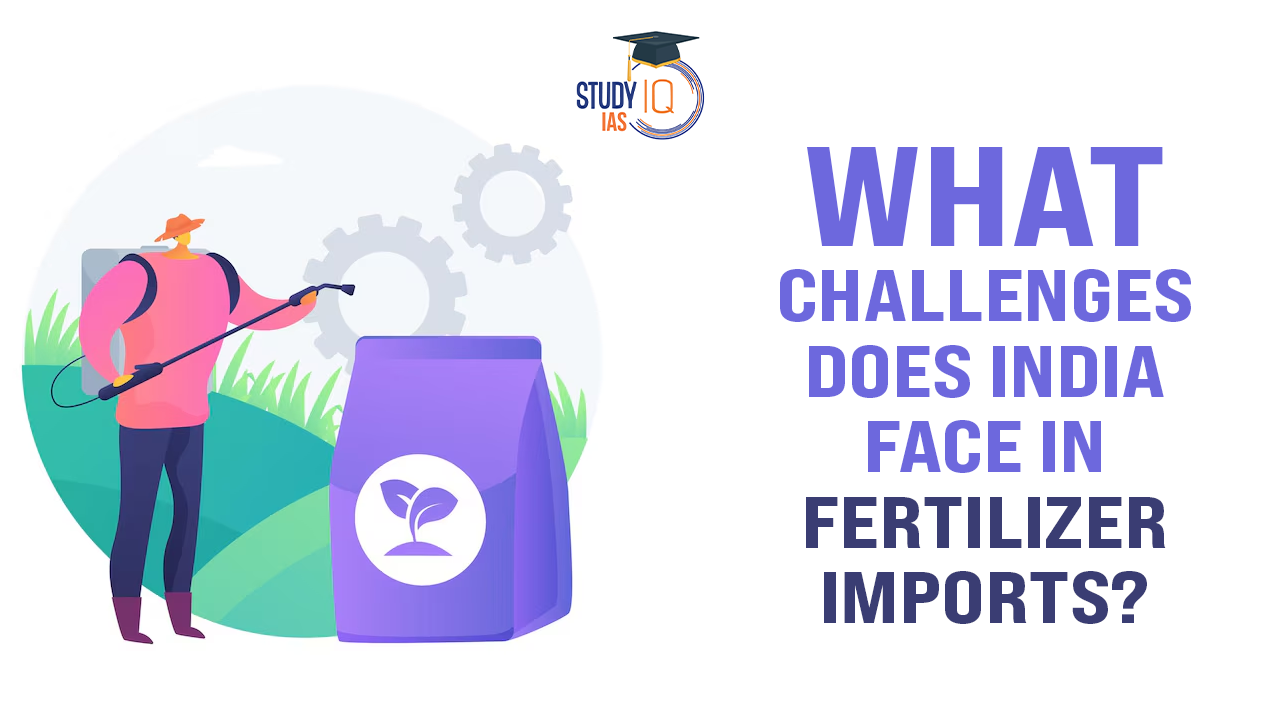Table of Contents
Challenges to Fertilizer Self-Sufficiency in India
- High Import Dependency: India imports a large portion of its fertilizer needs, including 100% of Muriate of Potash (MOP), 50-60% of DAP, and 20% of urea (according to Standing Committee Report (August 2023).
- This reliance makes India vulnerable to global price fluctuations and supply disruptions, especially given geopolitical tensions in major supplier regions like West Asia, Russia, and Ukraine.
- Inadequate Production Capacity: Despite recent increases, domestic fertilizer production does not meet demand, particularly in peak agricultural seasons.
- This shortfall leads to periodic shortages, affecting timely supply during critical crop cycles like the rabi season.
- Environmental and Waste Management Issues: Expanding fertilizer production without sustainable practices could lead to increased waste and environmental degradation. Currently, India lacks robust recycling and waste management policies for fertilizers.
The Need for Self-Sufficiency in Fertilizers
- Agricultural Stability: Reliable access to fertilizers is crucial for consistent crop yields, which are essential for food security, particularly as the rabi season requires timely and sufficient fertilizer supply.
- Economic Independence: Reducing import dependency can alleviate India’s trade deficit and insulate the agricultural sector from international market volatility, especially in times of geopolitical instability.
- Environmental and Social Benefits: A self-reliant approach with sustainable practices (e.g., nano urea and organic fertilizers) would reduce the environmental impact of large-scale chemical fertilizer imports and enhance soil health over time.
- Rural Employment: Increasing domestic fertilizer production offers potential for job creation in rural and semi-urban areas, particularly in new production plants and related infrastructure.
Recommendations for Self-sufficiency and Sustainable Farming
- Increase Domestic Fertilizer Production: Enhance capacity to reduce reliance on imports.
- Adopt New Technologies: Use alternatives like nano urea and natural farming to decrease chemical dependency.
- Policy Support: Establish supportive policies to encourage investments in fertilizer manufacturing.
- Enhance Local Capacity: Invest in domestic production, especially in areas like greenfield gas-based urea plants to boost self-reliance.


 List of Military Exercises of India 2024...
List of Military Exercises of India 2024...
 India to Host First Global Conference on...
India to Host First Global Conference on...
 How Terror Networks Abuse Digital Tools
How Terror Networks Abuse Digital Tools





















